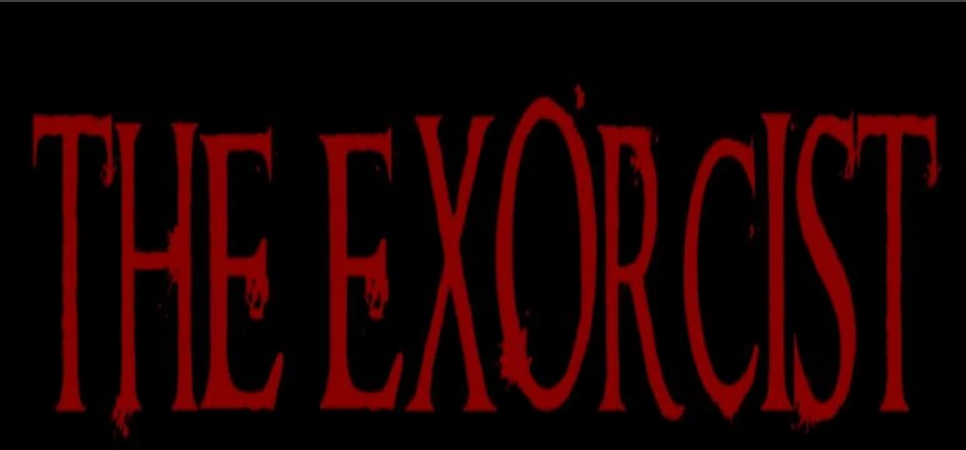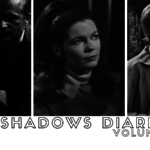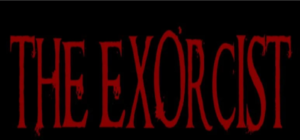
This serial column revisits The Exorcist television series. Conceived by Jeremy Slater for FOX and starring Ben Daniels, Alfonso Herrera, Geena Davis, and Alan Ruck, the show ran 2016-17 and was generally well-received by critics and audiences. DIS/MEMBER returns to the show in the context of a new Exorcist franchise film, seeking insight on what made the show work and why it’s lesser-known than its film counterparts. All screencaps sourced from Kiss Them Goodbye.
In high school I habitually used some of my precious after-school library time to read teen rags like Seventeen and YM. I can’t recall now which starlets and heartthrobs graced the covers, but some of the ads stuck with me. Two in particular married each other in my brain, although they were for different products. A Tampax ad showed a girl in a little bikini jumping off a dock into a lake, surrounded by cute boys; the text touted the slimmest plastic applicator. A Gillette Daisy ad practically upskirted its girl, highlighting long smooth legs, capped at either end by a mini-dress and ultra-2003 platform heels. Psycho didn’t scare Gwen, its text read. She was used to seeing blood go down the drain.
The implication was that poor Gwen had been using inferior razors and nicking her shins all this time. But I privately thought the Gillette ad copy was better suited to the Tampax product. The average girl did indeed see blood go down the drain all the time, every month, like clockwork. Ads for period products love to elide the material reality of blood. The Exorcist merely loves blood. Third episode “Let ‘Em In” opens the bodies of its cast to ever-increasing levels of violence and violation.
The gore, piss, and blood on display aren’t tempered by the episode’s theme–feminine rituals–but rather highlighted, made more provocative. The beautiful teen-advertisement bodies of the Rance sisters are interrogated, examined, urged to give up their secrets. Kat is a ballet dancer, that most feminine of pursuits… a femininity complicated by the episode’s opening scene. Driving late at night with another girl, Kat flirts and has her advances returned. Her friend-roommate-maybe-lover’s face remains in shadows, her voice and hands provocative, until the provocation is too much. The car accident happens; Julia’s wrecked countenance faces us at last, one eye wreathed in blood through the shattered windshield. The devastating violence done to this girl she loves twists that same love into shame and guilt in Kat’s brain. Certain churches might say that correlation equals causation. That illicit love–queer love–is one and the same with death.
Elsewhere, Father Marcus reveals that the Englewood murders were fodder for a demonic uprising. The most secret organs of the body, the hearts and genitals and eyes, were taken for dark purposes. If there’s a stand-out motif for The Exorcist series so far, it’s the eye. Kat’s eyes were the first of her the audience was shown, in the pilot episode. Casey’s eye behind the Jenga stack in “Lupus in Fabula” created a profound alienating effect.
“Let ‘Em In” is purely obsessed with eyes. The eyes of the Englewood murdered. Casey’s eyes blackened with demonic possession, then coated in dramatic eyeliner. Julia’s eye, unblemished and staring out of a bloody, ruined face. The eyes of Father Tomas as Father Marcus attempts to bring the demon out in Casey. The eye of God dilated wide, a taunt that demon casts at Marcus, with you at the center of His disinterest. The eye of a lone watchdog fixed on a corrupt religious institution, a street preacher raving on the steps of Angela Rance’s hotel as the papal entourage arrives. Later, he will seem to self-immolate on the sidewalk below. Later still, Father Bennett (Kurt Egyiawan, whom we last saw berating Marcus in Mexico City) will reveal that the street preacher spontaneously combusted.
The eyes of the city of Chicago are on the Pope’s tour. The eyes of the Church are on Tomas and Marcus. The priests bring their video evidence of Casey’s possession to Tomas’s superior, who rebuffs them sharply. It turns out even the camera’s implacable eye isn’t trustworthy. What’s more, Marcus has been excommunicated–news to him! “Let ‘Em In” continues developing the tension between a worldly, increasingly secularized Catholic leadership and the street-level clergy charged with carrying out their dirty work. That work might be the literal sweat-and-shit exorcisms Marcus performs, or merely the un-glamorous parish Tomas has taken under his wing.
In both cases, the priests are taken to task for magnifying their callings a little too well. Bishop Egan (Brad Armacost) suggests Casey requires psychiatric attention, not an exorcist (which, if you remember that Father Karras is also a psychiatrist…) The Pope’s handlers are advising him to avoid Chicago’s poorest neighborhoods, barely trying to conceal their assumptions about the crime rate; Marcus, the gun in the Church’s hand, is told to hand over his badge. Even Henry, whose physical and mental condition seem to place him closer to the shadows than others, questions whether Tomas truly believes in the Devil. He too is desperate to see what he wants, not what’s in front of him.
A pair of eyes only Casey can see now accompanies her every move. The stranger whom we first saw beside Kat at Casey’s game in episode two dogs her footsteps, appearing beside her as Father Marcus interrogates her. He’s in her dressing room while she shops with Kat for a dress to wear to Julia’s memorial. He seems to be every rite of passage for girls rolled into one: shoplifting and then wearing a sexy dress, underage drinking, self-harm. He offers the possibility of getting what she wants, dangling pretty clothes and petty rebellions like candy. But the relationship turns on a dime, as toxic relationships so often do. Don’t look at me, he instructs Casey when Marcus’s tough questions begin–but she can’t help it, revealing his presence to the priests in defensive bursts straight out of the abuser’s playbook. He doesn’t lie. He would never hurt me.
Later, he helps Casey hurt herself (an intentional burn with a curling iron) and then her sister (acting out at Julia’s memorial in front of the entire dance troupe). Later still, there’s an implication of pain or ecstasy, a confusion of desires, Casey covered in sweat as the ritual movements of girls are carried out onstage and the strange man’s hand creeps over her shoulder.
These desires–to give in or to resist; to claim one’s own self or surrender it totally–come to fruition after Casey and Henry leave the memorial early. On the train (itself rapidly becoming a motif within The Exorcist) after Henry goes into a daze, a boorish sports fan harasses Casey. Suddenly the dress she’d found beautiful and empowering marks her as a target. As the guy’s advances grow bolder, the camera bounces from face to face, finding passengers uncomfortable but unwilling to intervene… and Casey’s own face, zoned out, focused on something no one else can see. Her doom approaches; her demon walks the length of the train and kisses her, open-mouth and grotesque, too long and lingering to serve as anything but a tipping point. Finally, as Henry wakes from his daze, his eyes join the digital eye: the camera phone, the Internet, the mass hysteric vision of passersby observing something impossible. Casey demolishes the sports fan, tearing flesh from his chest and ripping his jaw from its hinges, her eyes black.
The original Exorcist‘s plot was necessarily constrained to its immediate surroundings, since news simply moved more slowly in 1973. Although in an earlier episode Father Tomas uncovers the Georgetown ordeal in an old newspaper, “Let ‘Em In” prepares the TV series to embrace the realities of streaming media and instant coverage. The phones recording Casey’s destruction echo Father Marcus’s concern that the demons are communicating with each other. This episode is nothing if not a dark bildungsroman, for the notion of demons in the contemporary era and for Casey, confirmed Possessed™.
Horror’s essential image is the beautiful girl covered in blood. Here she is, world–in high-def, instantaneous and immortal, a viral hit.









![[RETROSPECTIVE HORRORS] REVISITING THE DUNWICH HORROR](https://www.dis-member.com/wp-content/uploads/2020/12/untitled-f075933-150x150.png)
![[ZINE] MONSTROUS FEMALE FEAR : THE POWER OF SADY BOYLE’S ‘DEAD BLONDES’ AND DAVID CRONENBERG’S ‘RABID’](https://www.dis-member.com/wp-content/uploads/2019/12/Untitled-150x150.png)



Average Rating